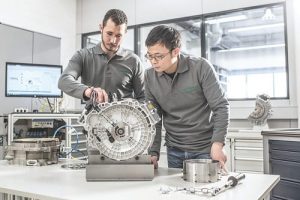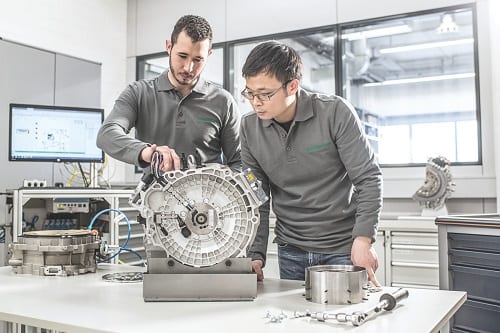Energy efficiency, environmental friendliness, and the associated rapidly growing number of hybrid and electric vehicles mark the beginning of a new era in the automotive industry. The German company Schaeffler will support these developments with forward-looking technologies. Against this backdrop, the company will double its global capacities in the electric mobility sector. The total number of employees working in the fields of electric mobility and mechatronics will increase to 2,400 during the next 5 years.

Schaeffler employees working on the P2 hybrid modul. Source: Schaeffler
“In 2011, Schaeffler established the eMobility Systems Division in order to systematically consolidate its activities in the field of electric mobility,” says Prof. Peter Gutzmer, Chief Technology Officer at Schaeffler. “Only 5 years later, we can offer a wide product range with successful new product start-ups.”
Driven by research and development, Schaeffler has developed technologies to volume production readiness within a short period of time under the organizational structure of the eMobility Systems Division. Successful products such as hybrid modules or electric axles resulted in new product lines, accompanied by a comprehensive personnel increase and high investments. The company has adapted its structures in order to consistently promote the positive developments and successes on this dynamic market.
Andreas Englisch has been responsible for the restructured Hybrid Drives business unit since April 2016. The Hybrid Drives business unit will comprise the product lines “Electric Axle”, “Hybrid Modules” and “CVT”, and will expand its workforce to over 300 employees by the end of the year.

















